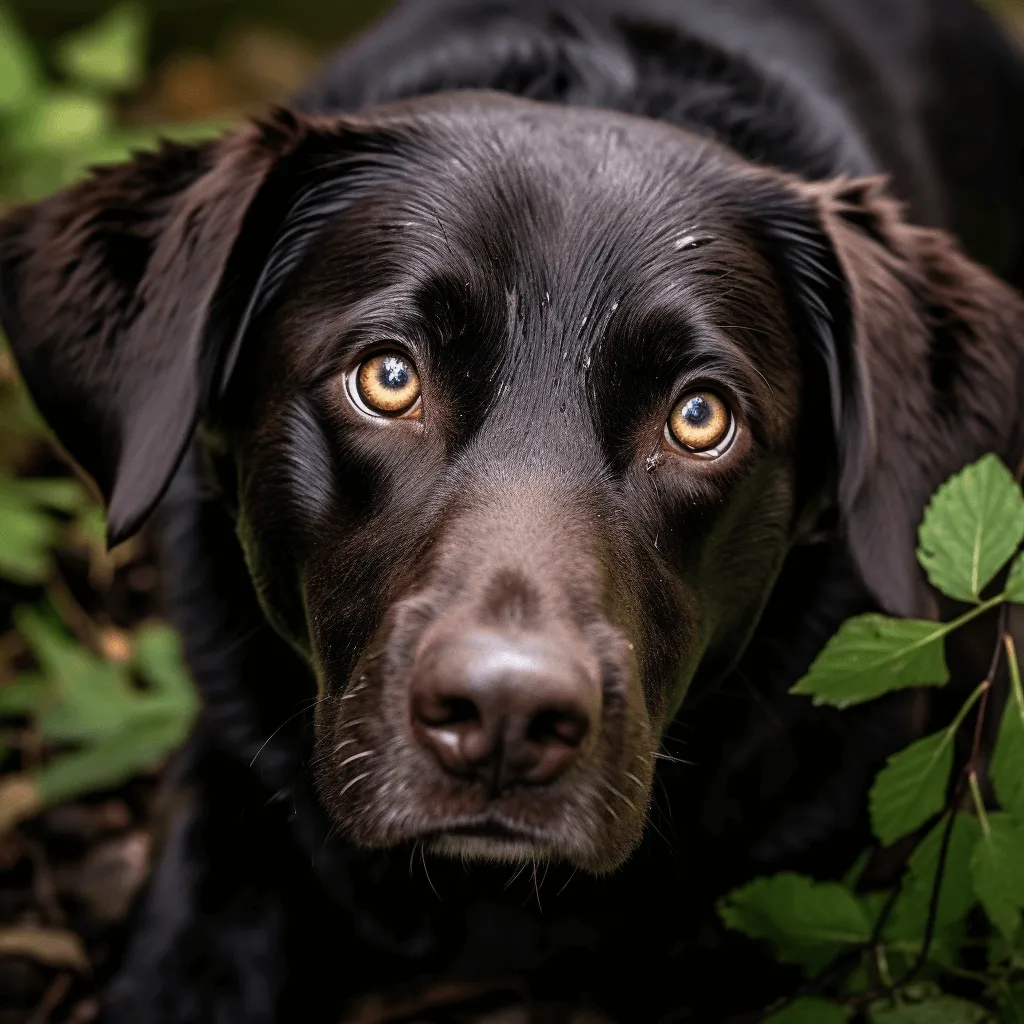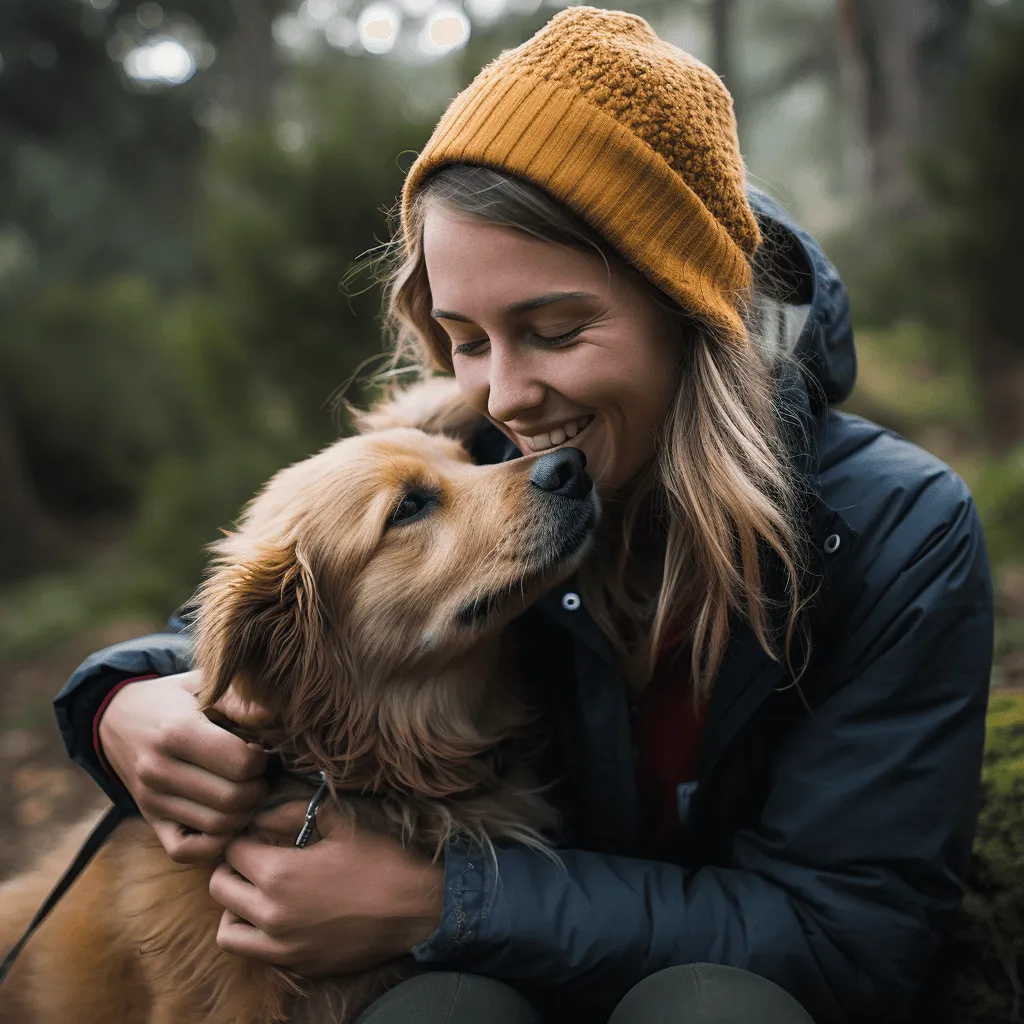Recognizing A Dog In Survival Mode
When dogs find themselves in stressful or threatening situations, they may exhibit various responses based on their instincts and perceived level of danger. Understanding these responses can help us better comprehend a dog's behavior when they are lost or feeling uncertain.
Fight
One common response is the "fight" instinct, where a dog may become defensive and display signs of aggression, such as raised fur, growling, baring teeth, or lunging. It's important to approach these dogs with caution to avoid escalating the situation.
Flight
On the other hand, the "flight" instinct prompts panicked dogs to flee from perceived threats, seeking a safe place to hide. If their escape is blocked, they may feel trapped and resort to defensive behaviors.
Freeze
Another response is "freezing," where a dog remains completely still in an attempt to go unnoticed by potential dangers. This behavior stems from intense fear, with the dog believing that staying motionless is their best chance of survival.
Fret
Lastly, dogs in a state of anxiety may "fret," exhibiting restless behaviors such as pacing, panting heavily, repetitive lying down and sitting up, and attempting to escape from enclosures. These dogs struggle to relax and continuously try to avoid or escape the source of their stress.
By recognizing these different responses, we can approach lost dogs with empathy and make informed decisions to ensure their safety and well-being.

The Dos And Don’ts Of How To Catch A Dog That Won't Come To You
Catching a dog that refuses to come to you can be a challenging task. It's important to approach the situation with caution and not risk your safety by attempting to get close to the dog without following a few essential guidelines. Below, we will provide you with the dos and don'ts of how to safely catch a dog that won't come to you. By understanding these rules, you can increase the chances of a successful and safe outcome for both you and the dog.
DO Monitor The Dog’s Body Language At All Times
Observe the dog’s behavior from a distance to estimate its level of comfort and stress. Look for signs of fear, aggression, or agitation, such as raised hackles, growling, baring teeth, or lunging. It's essential to be aware of the dog's emotions to avoid putting yourself in a risky situation. If you notice any signs of distress, back away slowly and give the dog space.
DON’T Approach A Dog Too Quickly
It's important not to rush or make sudden movements that may startle the dog. Instead, maintain a calm and relaxed behavior, moving slowly and deliberately towards the dog. Give it time to assess your presence and feel more comfortable with your approach. By being patient and gradual in your movements, you increase the chances of gaining the dog’s trust and successfully catching it.
DO Call To The Dog In A Happy Voice
Use a gentle and friendly tone, calling the dog by its name if known, or using generic terms like "puppy" or "doggy." Avoid using harsh or commanding tones that may frighten or intimidate the dog. By using an upbeat and inviting voice, you can communicate your friendly intentions and increase the likelihood of the dog responding positively and approaching you.
DON’T Chase A Dog That’s Scared Or Lost
Instead of chasing the dog, which may trigger its flight response, it's important to remain calm and give it space. Sudden movements or aggressive actions can escalate the situation and potentially cause the dog to run even farther away. It's best to create a safe and inviting environment by using patience, gentle gestures, and positive reinforcement techniques to encourage the dog to come to you willingly.
DO Toss Treats His Way
Choose small, soft treats that are enticing to the dog's senses. By tossing treats in the dog's direction, you create a positive association and may pique its curiosity, making it more likely to approach you. It's important to be patient and give the dog time to feel comfortable and build confidence. Remember to toss the treats gently and avoid any sudden movements that might startle or scare the dog.
DON’T Corner A Scared Dog
Cornering a scared dog can increase its fear and anxiety, leading to defensive behaviors or attempts to escape. Instead, provide the dog with space and allow it to have an escape route. Avoid blocking its path or trapping it in a confined area. This will help the dog feel safer and more in control of the situation. By giving the dog the freedom to move around, it may gradually feel more comfortable and may be more willing to approach you on its terms.
DO Try To Get The Dog To Follow You
If you're trying to catch a lost or stray dog, one effective approach is to try to get the dog to follow you. You can do this by using enticing gestures or objects that grab the dog’s attention, such as treats or toys. Start by crouching down and extending your hand with a treat or toy, calling the dog in a friendly and inviting tone. Slowly back away, encouraging the dog to come closer and follow you. It's important to be patient and give the dog time to build trust. Avoid making sudden movements or loud noises that might scare the dog away.
DON’T Grab The Dog By The Collar Or Body
It's crucial to avoid grabbing the dog by the collar or body. This approach can startle or agitate the dog, leading to defensive or fearful reactions. Instead, opt for gentle and non-threatening methods of interaction. If the dog is approachable and seems comfortable, you can try offering treats or using a slip lead to safely guide it. However, forcibly grabbing or restraining the dog can escalate the situation and potentially result in bites or injuries. It's important to prioritize the dog's well-being and use positive, patient, and non-confrontational techniques to gain the dog’s trust and cooperation.

DO Keep The Dog In A Safe, Open Area
If you manage to get the dog to approach you, proceed carefully by attempting to attach a leash to it. You can then lead the dog to a secure place like your backyard or garage, ensuring there are no other pets or dogs around. In case the dog doesn't have a collar, you can try using a limited slip lead or create a makeshift collar and leash to safely guide it. While it's okay to provide water, refrain from offering food until the dog has been examined by a medical professional or animal control officer. However, it's crucial to note that not all dogs can be easily leashed and taken home. Scared dogs can quickly become a danger to themselves and others, so it's vital to proceed with caution and prioritize everyone's safety.
After ensuring the lost dog is in a secure location, take action to find its owners. Check for identification such as tags or collar that may have the owner's contact information. Visit a veterinarian or animal shelter to have the dog scanned for a microchip. Contact local animal shelters, rescue organizations, and post on online platforms like Pet911 to create a listing for the found dog.
To prevent your own dog from getting lost, make sure you have proper fencing in place and never leave your dog unattended outside. Always ensure your dog wears a well-fitting collar and leash. If your dog is prone to escaping collars, consider using a high-quality dog harness. Additionally, investing time in training and reinforcing recall behaviors using positive reinforcement can greatly help in ensuring your dog responds when called. In addition, it's essential not to overlook the importance of microchips and ID tags. Microchipping your dog and ensuring they wear identification tags with your contact information greatly increase the chances of being reunited if it ever goes missing. These measures provide an extra layer of protection and help others identify your dog and contact you promptly.

